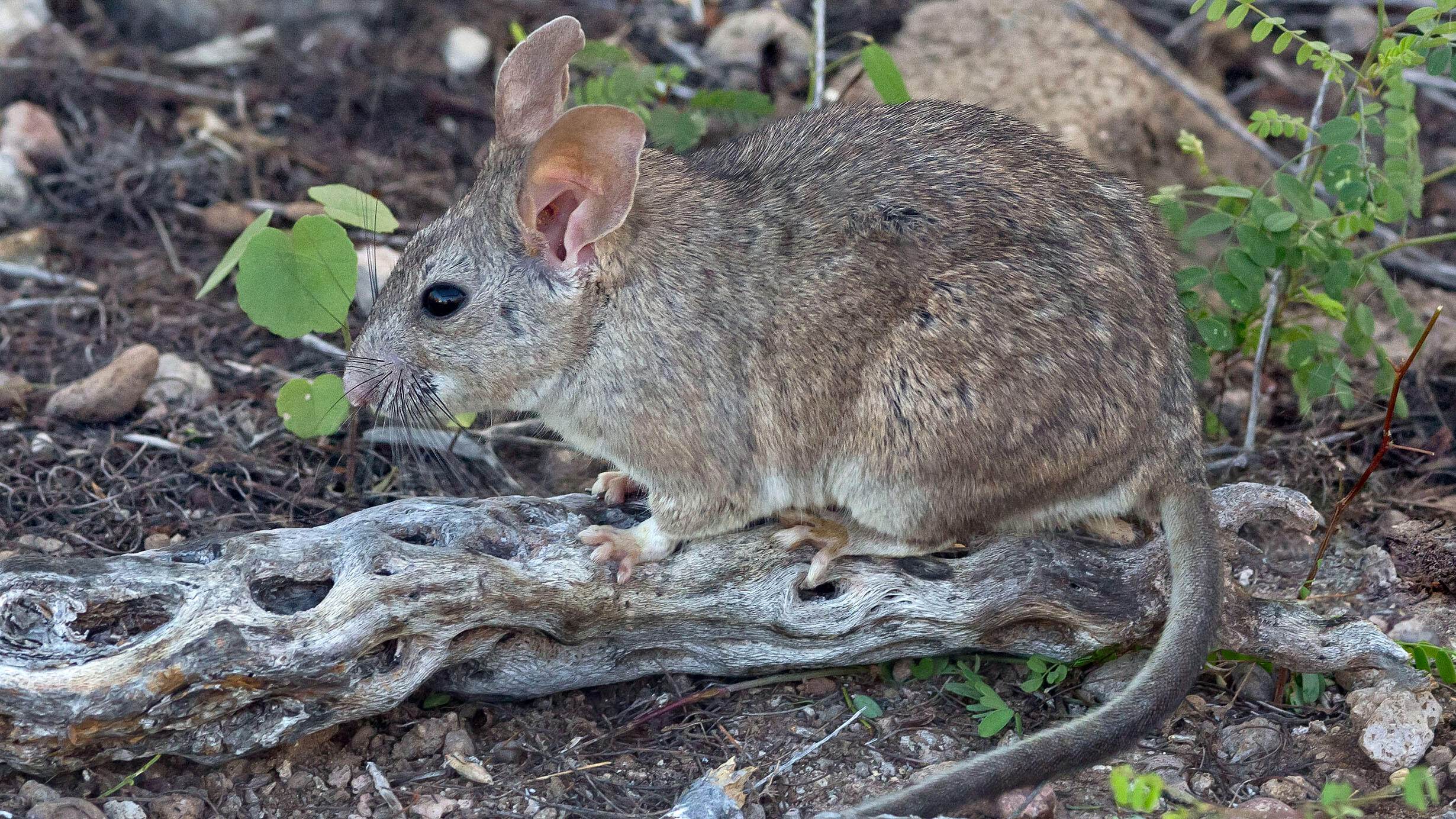 Packrats, like Neotoma bryanti, use their urine to build their nests, which also helps to preserve them—sometimes for thousands of years.
Packrats, like Neotoma bryanti, use their urine to build their nests, which also helps to preserve them—sometimes for thousands of years. Courtesy of A. Harper/Flickr
When building nests for their young, packrats—a group of long-tailed nocturnal rodents that live in arid regions across North America—are quite resourceful. They use plants, insects, bones, fecal matter, and even their own urine, which acts as a binder to stabilize and preserve packrat nests, known as middens, for tens of thousands of years. With next-generation DNA sequencing, ancient packrat middens can be analyzed for clues about Earth’s ancient ecology, as Museum researchers have done in a new study in Ecology and Evolution.
© Rob Harbert
“Fossil rodent middens are powerful tools in paleoecology,” said Michael Tessler, a postdoctoral fellow at the American Museum of Natural History and one of the study's authors.
Midden contents have already been used by researchers in separate studies to identify an extinct species of Argentinian ground sloth and to look for evidence of papillomavirus infection among packrat populations from the last 27,000 years. “Midden contents are so well preserved that fragments of ancient DNA can be extracted and analyzed across millennia,” said Rob Harbert, an assistant professor at Stonehill College who conceived of the study during his time as a postdoctoral researcher at the Museum. “Because of their dense distribution, fossil middens in the Americas offer the chance to genetically profile entire communities through time and space.”
© Julio Betancourt
For their work, the researchers looked at DNA from 25 packrat midden samples between 300 and 48,000 years old from two locations—City of Rocks National Reserve in south-central Idaho and Guadalupe Canyon in Northern Baja California, Mexico—that span the range of current climatic conditions where North American packrat middens are preserved and have been studied. The researchers used a next-generation sequencing technique called shotgun to analyze the DNA, for which DNA is randomly selected for comparison. They found that middens up to 32,000 years old contain recoverable DNA, of which between 20 and 40 percent was identified as belonging to eukaryotic organisms including plants and grasses, vertebrates, insects, and fungi. Also present was a large amount of bacterial DNA and some viruses.
© Julio Betancourt
Researchers were able to successfully classify some of the recoverable DNA to the family level but say that more information is needed to make definitive matches at the genus or species levels. Since the shotgun technique selects DNA fragments for comparison at random, those fragments belonging to an organism that does not match a known database will only draw the closest match—or none at all.
“As the costs of DNA sequencing continue to decrease and computational power increases, the prospects for using this technique will greatly improve,” Harbert said. “Further investigation into the taxonomic composition of middens could refine our understanding of the timeline of past climate change, species migration, and extinction, and this will better inform the study of the effects of current and future climate change.”